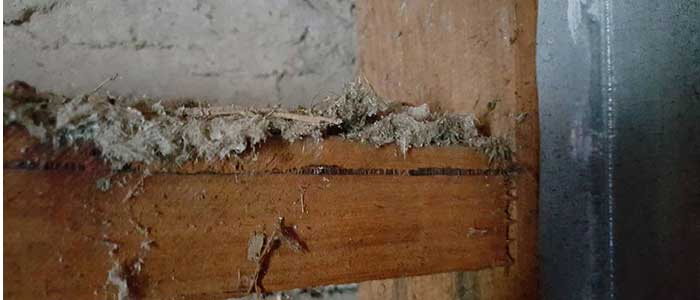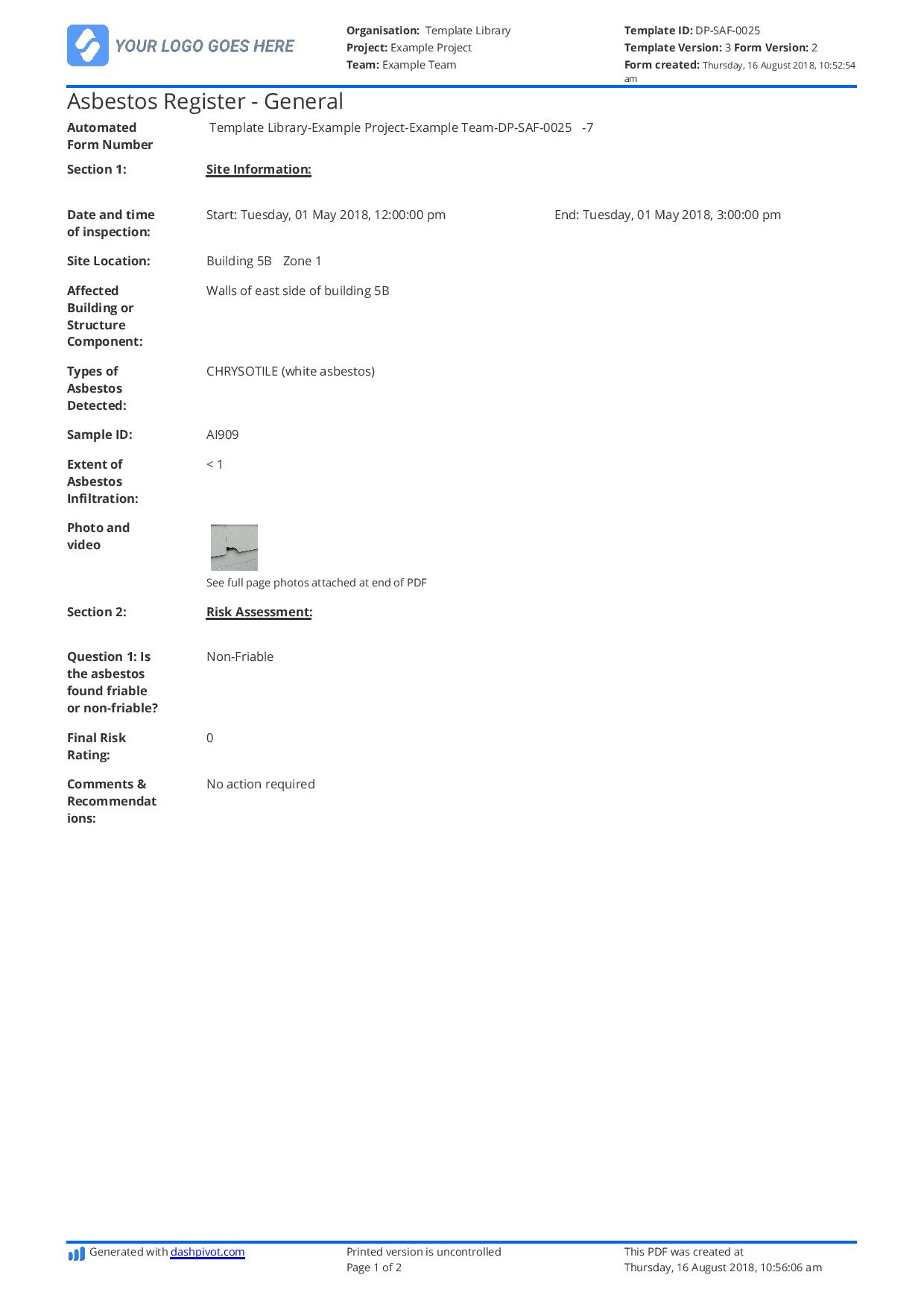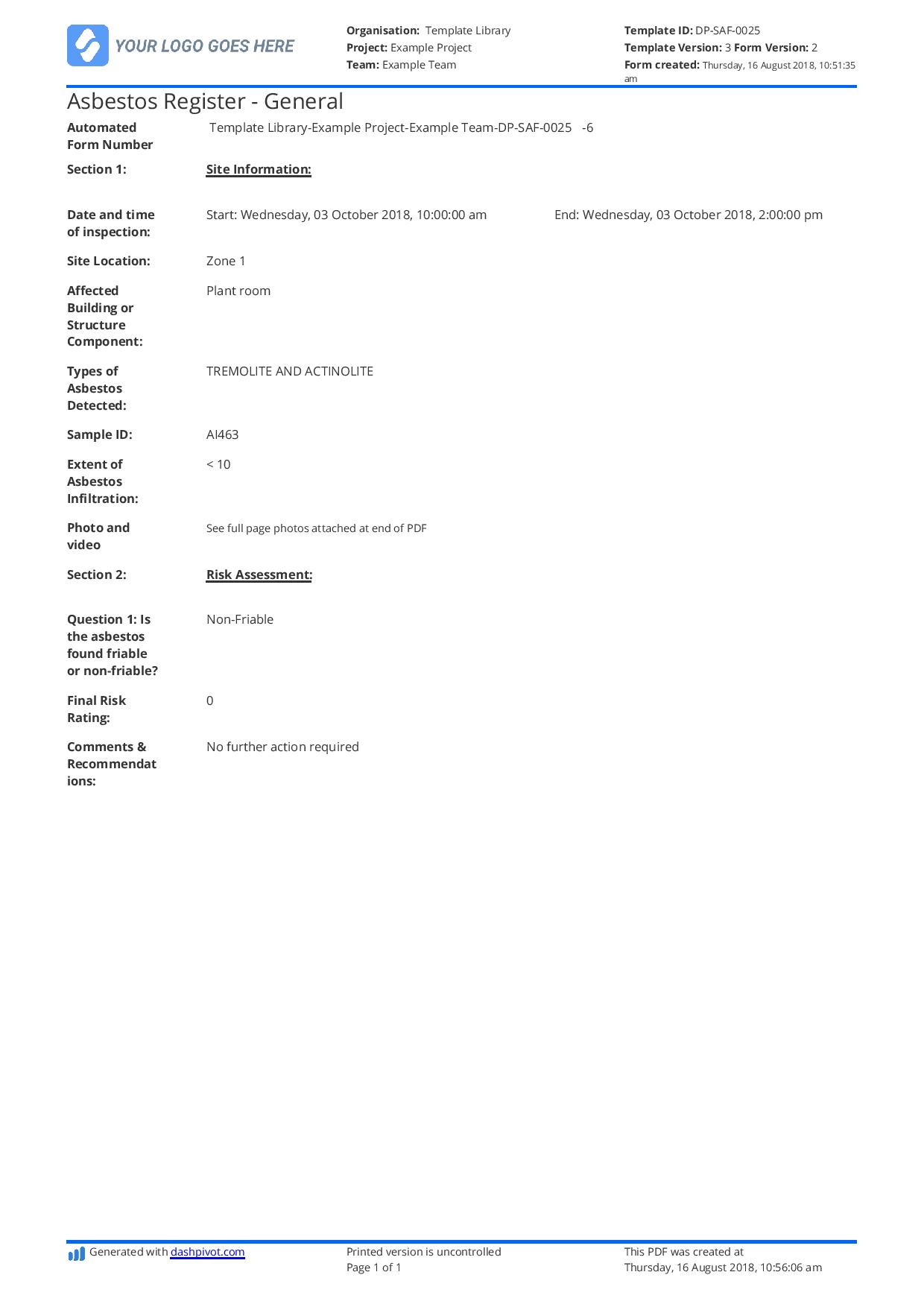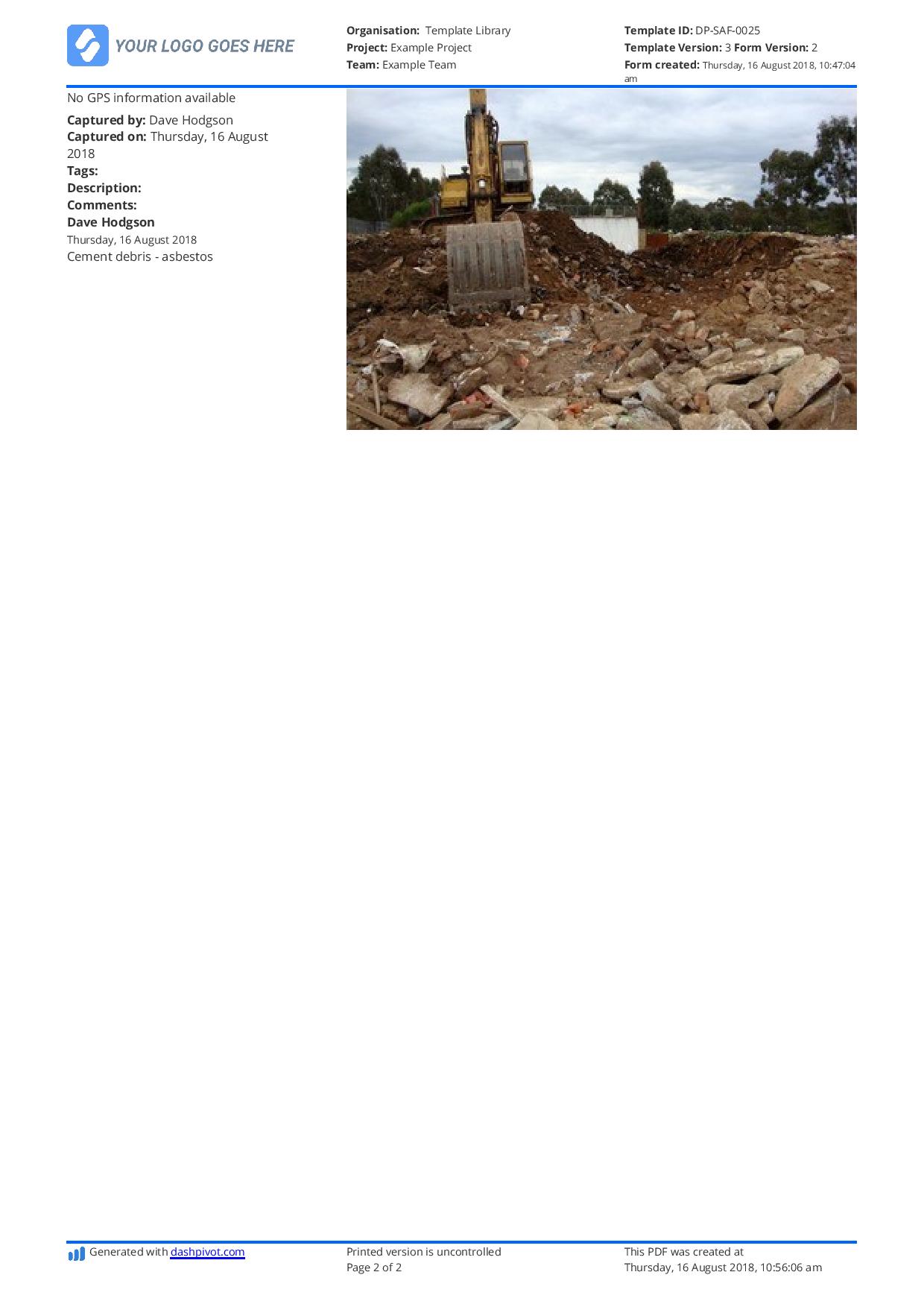Safety – Asbestos register exposure

Asbestos register example for asbestos exposure and removal
A little bit about asbestos
Asbestos has a number of favourable natural characteristics that made it a staple of construction and industrial works - mostly during the 20th century up until the late 1980's.
These properties include good sounds absorption and resistance to fire, heat and electricity making it a good insulator. Unfortunately, asbestos also has a number of unfavourable characteristics too, which were brought to light and better understood after many years.
While asbestos miners, cement manufacturing workers, builders, plumbers and electricians were dealing with asbestos on a frequent basis with no apparent side effects or damage, the negative impacts of asbestos can take decades to appear.
Asbestos is a set of six (6) naturally occurring silicate materials which have long and thin fibrous crystal which contain millions of microscopic fibrils.
It's these tiny fibres which cause the danger and the damage to humans. The fibres are easily breathed in and become trapped in the lungs. The breathing in of asbestos is known to cause a number of breathing and major health problems; most notably cancer.
Although rules and regulations across countries, states and territories are now in place to protect workers and the general public against the obvious dangers of asbestos, it is important for companies and projects to have their own safety management processes in place to ensure safe exposure, and the safe removal of asbestos from our ageing infrastructure and buildings.
The asbestos register example
For companies who work in construction and other industrial industries, maintaining an asbestos register is an important component of overall asbestos management.
An asbestos register is a living document (register) which lists all of the identified asbestos on a site, project or in the general workplace - along with supporting information of that specific asbestos find.
The purpose of the asbestos register is to provide a single source of truth and reference point for companies, projects and teams as to where asbestos has been identified, whether or not there are any outstanding actions (or removals) associated with that asbestos find, and better record keeping.
The asbestos register example you see below is a great example of a general asbestos register that a company would keep and maintain.
There are a number of sites which have already been identified as having asbestos, as well as supporting information and proof about that asbestos.
Some of the things which you need to include in your asbestos forms (which become the information source fro your register) are:
- The site location where asbestos has been found (or assumed to exist)
- The date and time of inspection
- The affected building or structure component
- The type of asbestos detected (asbestos is usually identified by its colour (white, brown, blue etc.)
- The extent of asbestos infiltration and risk assessment which will determine how the asbestos is managed and/if removed
- Photos and videos of the absestos
- A final risk rating based on the extent of infiltration and whether or not the asbestos is friable or non-friable
- Friable asbestos is easily crushed or pulverised into powder with handling so poses a higher risk of exposing people to airborne fibers
- Some final comments and recommendations from the inspection party
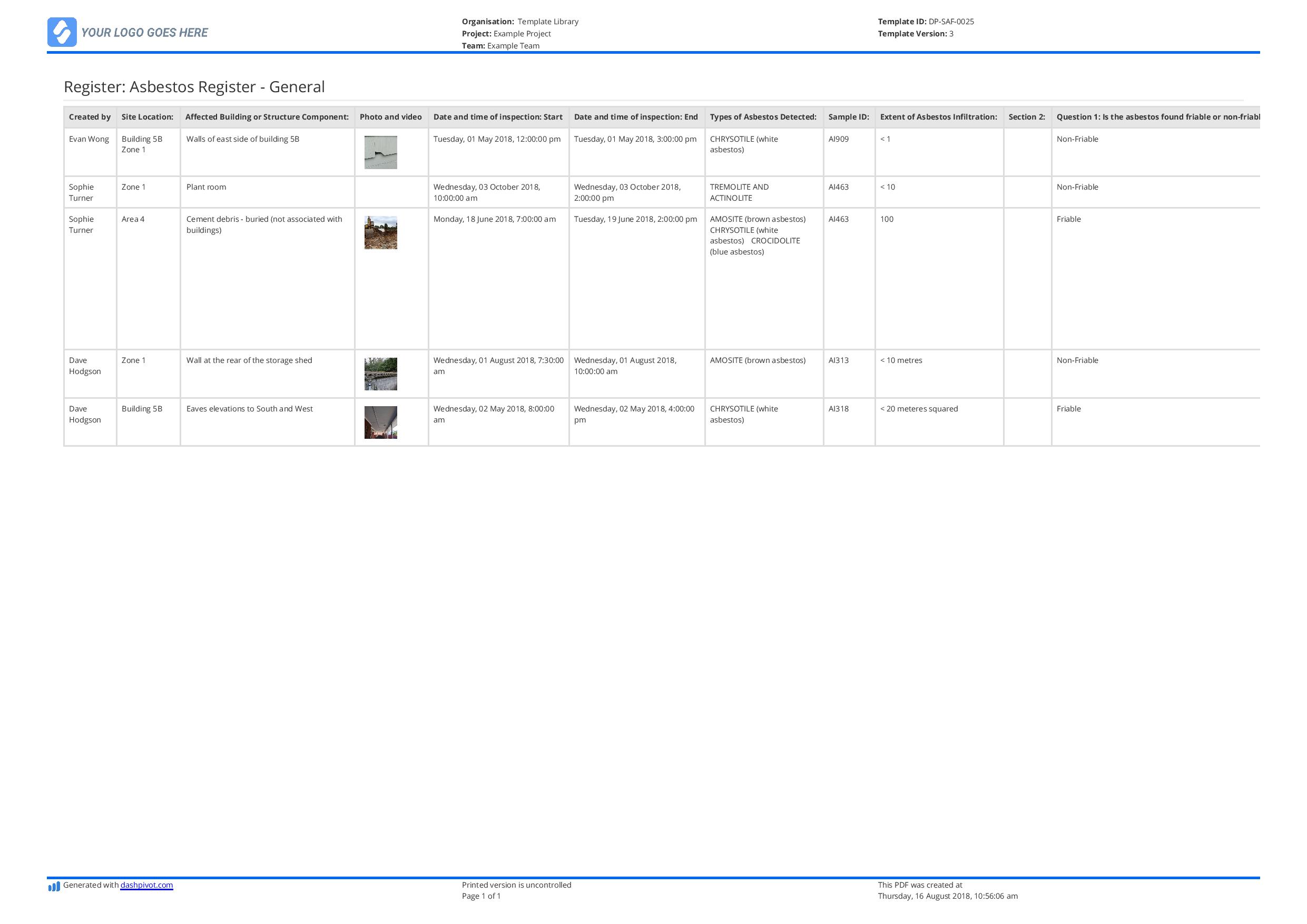
See how you can use and edit this asbestos register template for free.
Asbestos exposure and asbestos removal
Once your company or projects have a strong handle on the documentation and notification of asbestos via an asbestos register, you need to focus on the action phase of asbestos safety.
The goal of dealing with asbestos is to avoid dangerous asbestos exposure. People who aren't dealing with asbestos directly can still be exposed to asbestos in their workplace, communities or homes without danger. It's the disturbance of asbestos which causes the harm - which is why it is so important to document the type of asbestos accurately - and then deal with it properly.
Different asbestos identifications require different approaches. Where possible and safe, the appropriate party may decide that the asbestos risk can be isolated effectively. Isolating may include measures such as enclosing, sealing or even using administrative controls for a period of time to ensure there isn't an unsafe exposure. Sometimes these methods of preferred over the full removal of asbestos - when it's not absolutely necessary.
If it is decided, based on the risk assessment performed and recorded in the register that removal is necessary, then the process for removal is 'initiated'.
Anyone who removes more than 10 square meters of non-friable asbestos is required to be trained, and required to hold the relevant license.
Even if you are removing smaller quantities, it is recommended you engage a removalist unless your team is confident and competent.
Asbestos safety management
The safe removal of asbestos should be included in your asbestos management plan, which outlines the what happens in the case of X or Y, who is responsible for what, and what control measures need to be in place.
And your asbestos management plan should resemble your other safety plans and general safety practices. They should be well thought, always accessible and regularly updated to stay relevant for new parties, people, technologies and newfound knowledge.
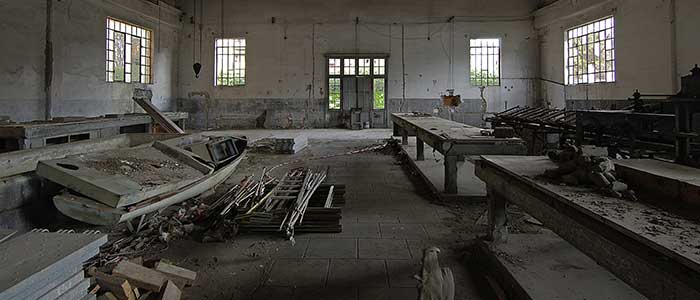
Asbestos Register template
Manage asbestos inspections, tracking and follow-up actions more easily and reliably. See the template →